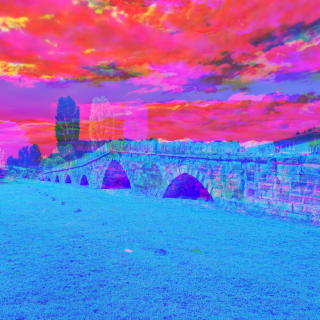The 2001 armed conflict in the Republic of Macedonia – Republic of North Macedonia as of 2019 – between the state security forces and the ethnic Albanian insurgents brought the state to the verge of a full-fledged civil war, and it is nowadays viewed as the last violent escalation pertaining to the Yugoslav Wars of the 1990s. The seven months of hostilities in Macedonia, from late January to August 2001, resulted in more than 200 casualties, approximately 90 civil victims, and 170,000 internally displaced persons and refugees. The conflict hit the Macedonian society by surprise, having in mind the relatively peaceful departure of the Yugoslav Army from the state territory in the early 1990s and the state’s cooperation with the international community’s peacekeeping missions in the course of the 1990s. The violence was settled with the so-called Ohrid Framework Agreement (OFA), signed on 13th August 2001 by the leaders of the largest parliamentary parties in the state and brokered by the foreign diplomats. The OFA was not a typical ceasefire agreement; however, [nt1] it paved the way for a political decentralization of the post-Yugoslav Macedonia, thus allowing for a better representation of the ethnic minorities in the state apparatus.
At the 20th anniversary of the OFA, we, together with Prof. Lidija Georgieva from the Skopje University, noted that the dominant way of evoking the interethnic relations in post-OFA Macedonia is by referencing the various episodes of tensions and violence between the different ethnic communities populating the state. This, as many before us neatly observed, has much to do with the political offer developed in the immediate aftermath of the conflict, as it stimulated two separate and mutually exclusive truths and sidetracked all the attempts to openly discuss the violence, develop transitional justice mechanisms, and establish facts about what had happened in 2001. The model centered on the two- and the two largest ethnic communities only heretofore metastasized, for instance, into the culture and cultural politics, history writing and history education, and especially into the politics of memory and public commemorations. Most recently, for instance, the OFA was blended in the narrative against the two bilateral agreements involving North Macedonia, that is, the one with Bulgaria (2017) and the other with Greece (2018), as a document which helped redefining the state’s sovereignty under coercion. This, in turn, reinforces the discourse, which is somewhat dominant among the Macedonian community and championed by the political right-wing, that problematizes OFA’s prehistory, stipulations, and implementations, while obfuscating its merits.
In this very context, we indicated that the commemorative events related to the 2001 are frequently the major triggers for those exclusivist public discourses. Although the commemorative events mostly recreated and relegitimized the above bicentric pattern, they were, and still are, differing in terms of spatial distribution, levels of formality, organization, agendas and goals, among the other things. Therefore, the initial goal of the research project that we launched in 2001, with the support of the Skopje-office of the Friedrich-Ebert-Stiftung was to grasp the very nuances of the commemorative events pertaining to the 2001 conflict in Macedonia and track down their actors and their agendas as pushed through the memory events in the focus. The later was much inspired by the recent scholarship on memory actors and memory communities, part of the memory studies’ turn to actor-centered studies of politics, political actors, and their strategies. The project hence commenced with a comprehensive review of the existing research and two expert workshops with domestic and international scholars and practitioners. We then proceeded with identifying the sources, which in our case were three types of publicly available materials: newspapers and online media outlets, municipal outlets, and published oral history interviews. This choice was informed by the ongoing COVID-19 pandemics at that point and the public health directives. Albeit they did not limit the scope of the data-gathering, they made a fieldwork research virtually impossible, for instance. Therefore, the data was gathered online and in local libraries by a team of three coordinators and three younger researchers of ethnic Macedonian and Albanian origins.
We thereby developed a coding system and managed to create a dataset of approximately 300 units related to various references of commemorative events: be it, for instance, formal or informal commemorations, placements of memorial objects, or state-sponsored ceremonies in a time span of two decades, from 2001 to 2021. These units were categorized by date, location, and the type of the event, as well as by a set of categories which involved certain interpretative observations: such as the message or tone of the event or the speaker (in the context of the conflict or the OFA), the main actors of the commemorations, the types of victims who are commemorated etc. Albeit the guiding principle was to be as encompassing as possible, this model and research methodology left several aspects uncovered, such as data which were unable to be obtained through our sources (e.g. gender aspects) or data which we did not focus on during this research project (e.g. social media and visual data of commemorations). The metadata helped us reveal the developments, processes, and changes of particular events in a given temporal scope, and therefore provided a solid set of empirical data for interpreting the main currents and tracing the eventual patterns.
Based on the above units, we selected 135 of them which we further on presented as an online interactive map, which had its premiere on the 20th anniversary of the signing of the OFA. The selection covered all the noted commemorations in terms of locations, focusing on the first ever recorded commemorative events in that very location. The rationale behind the online map was to assist the better understanding of the memory dynamics related to the 2001 by expert and non-expert audiences, while the materials were offered in three languages: Macedonian, Albanian, and English. Our interpretations, which were also provided at the webpage, alongside the different options of categorization and analysis (such as, for instance, the contextual features for each of the surveyed years), were aimed at contributing to a more comprehensive debate on the topic. Finally, we ended up the project with a compilation of a volume containing three studies discussing some of the peculiar national struggles with memory and memory politics in the post-Yugoslav context, as well as four interviews with four experts working on different aspects of the memory of 2001 in North Macedonia. The final chapter of the volume brought a theoretical and methodological review of the Vera and Donald Blinken Open Society Archive’s Yugoslavia Archive Project, that although considerably more far-fetching, served as our inspiration for the work on a digital memory platform.
— — — — — — — — — — — — — — — — — — — — — — — — — — — — — — — — — — — —
The research unveiled several recurring patterns pertaining to the commemorative activities related to the 2001 conflict in Macedonia. The dominant patterns included the commemorations of the state security forces, the commemorations of the insurgents, the anniversaries of the OFA, and the commemorations of civil victims in the state. In this text, I will focus on the second one, providing its major coordinates and contexts developed during the past years.
To start with, it is important to be noted that the commemorations of the slain members of the state security forces varied from several aspects. In terms of officiality, for instance, we observed that during the conflict and in its immediate aftermath, that is, after August 2001, several state sponsored institutions started to place memorials dedicated to the slain members of the state security forces, while we also noted the first less formal commemorations in their birthplaces. These events were done in line with the prevailing discourse which saw them as defenders of the state sovereignty and therefore Macedonian patriots and heroes of the nation. Moreover, in both the above cases there were no reported tensions whatsoever, which was not the case with the commemorative events related to the slain members of the state security forces at the sites of their killings. Those sites were usually sites of ambushes which took place in 2001, at the frontlines or in the villages with an ethnic Albanian majority, such as the ones in Vejce and Karpalak, both near the town of Tetovo. In most of the cases, the plaques were getting destroyed soon after the events.
The commemorations of the ethnic Albanian insurgents revolve around the tropes of their struggle, sacrifice, and victory, which resembles the dynamics related to the fallen KLA soldiers in Kosovo. However, contrary to Kosovo where several rival political factions compete over the legacy of the Kosovo Liberation War, in post-conflict Macedonia, there are two uncontested heirs of the legacy of 2001, that is the political party Democratic Union for Integration (DUI), or the political wing of the insurgents turned into a political party, and their war veteran organization. The earliest such commemorative activities related to the fallen Albanian insurgents in Macedonia had the “liberation” of the villages and towns that they brought under military control in 2001 as a highlight. These initiatives were not in tandem with the state institutions.
As of the mid-2008, DUI started to stress the historical narrative linking the early Albanian nation-building with the struggle during the 2001 conflict in Macedonia. This narrative was promoted via public commemorations but also in memorial institutions, such as in the so-called Museum of Freedom in the Skopje municipality of Chair (2008) and the Museum of the NLA in Slupchane (2011), which exhibits both military memorabilia and honors the Albanian civil victims. The amalgamation of different historical periods was much inspired by the ideas of pan-Albanian past resistance. In Kosovo, for instance, as neatly observed by Anna Di Lellio and Stephanie Schwandner-Sievers, this narrative centered upon Adem Jashari and depicted his sacrifice in line with the Albanian resistance in the early 20th century. A monument to Jashari was also erected in Radusha, Macedonia, in 2012.
In parallel to the above construction of the image of military victory, the commemorative culture related to the Albanian insurgents in Macedonia involved an element of sacrifice. The commemorative construction of “martyrs of the Albanian nation” in Macedonia, as precisely observed by Vasiliki Neofotistos, was done as a result of the collaborative efforts of their friends and relatives, with a financial support of the Albanian community in Macedonia and the Albanian diaspora. Those memorials were built in the central places of the settlements, while some of them were placed on elevated grounds overlooking the Albanian villages in North Macedonia.
One of the most recurring symbols of the post-2001 Albanian memorial architecture in Macedonia is the black double headed eagle: such a monument was erected in a predominantly Albanian municipality in Skopje in 2016, for instance, on the anniversary of the start of the armed hostilities in 2001. The memory narrative over the fallen NLA fighters had also religious references and aims at attributing a notion of religious purity to the NLA casualties, in addition to discourse that frames those very fighters as insurgents who sacrificed their lives for the Albanian nation. The role of the religion in the commemorative practices related to Albanian “martyrs of the nation” is much more than a mere ethnic denominator, as per Paul Reef. Moreover, this process has a goal of ascribing aspects of religious martyrdom to the “martyrs of the nation”.
An illustrative case, in these regards, is the reburial of Aqif Krosi from Rečani in 1997, a leader of the Albanian nationalistic organization National Front [al. Balli Kombëtar] that cooperated with the Nazis during the Second World War. After a long search for his body that had been buried in a secret place by the socialist authorities, a bribed police officer revealed its location and Krosi was then reburied in the traditional Muslim fashion at the local mosque’s cemetery while other villagers have been buried over a kilometer outside the village. Krosi’s tombstone was adorned with Albanian double-headed eagle and an inscription that depicts him as “an inspiration for every Albanian” and a monument of him was erected in the village shortly afterwards.
Finally, it is important to be stressed that the DUI appropriated the OFA as a token of its military victory in 2001; a narrative which was mostly promoted on the anniversaries of the signing of the OFA. More precisely, as of August 2002 and up until 2006, only DUI organized events marking the signing of OFA in different multiethnic places across the state. These events were boycotted by the Macedonian politicians; however, they were attended by members of the diplomatic corps in the state and representatives of the international community. As such, DUI used the platform of the OFA annual commemorations to relegitimize its political agenda as a pro-NATO and pro-European party, trusted partner from the Albanian political block in Macedonia, and a party that aims at settling interethnic tensions in a democratic and peaceful manner.
State institutions started to organize events marking OFA only as of 2006. This came after the formation of a special institution, the Secretariat for the implementation of the OFA, that would turn into the Ministry of political system in the late 2010s, which eventually took over the organization of the anniversaries of OFA.
The annual ceremonies of 13th August remain the most successful model of a joint commemoration of any aspect of the 2001 armed conflict in Macedonia. The anniversary commemoration, focused on the common prospects of the ethnic communities, also legitimizes the shared geopolitical visions of the political elites. Its reception seems to be more favorable than other commemorative events involving representatives of the two ethnic groups. However, the attempts to open the annual ceremonies of the OFA to the wider public have not been obtaining similar successes.
[nt1]Here the sense is shifted a bit; it was not a typical ceasefire precisely because it paved the way… In the original it was “agreement, however, as it paved…”



